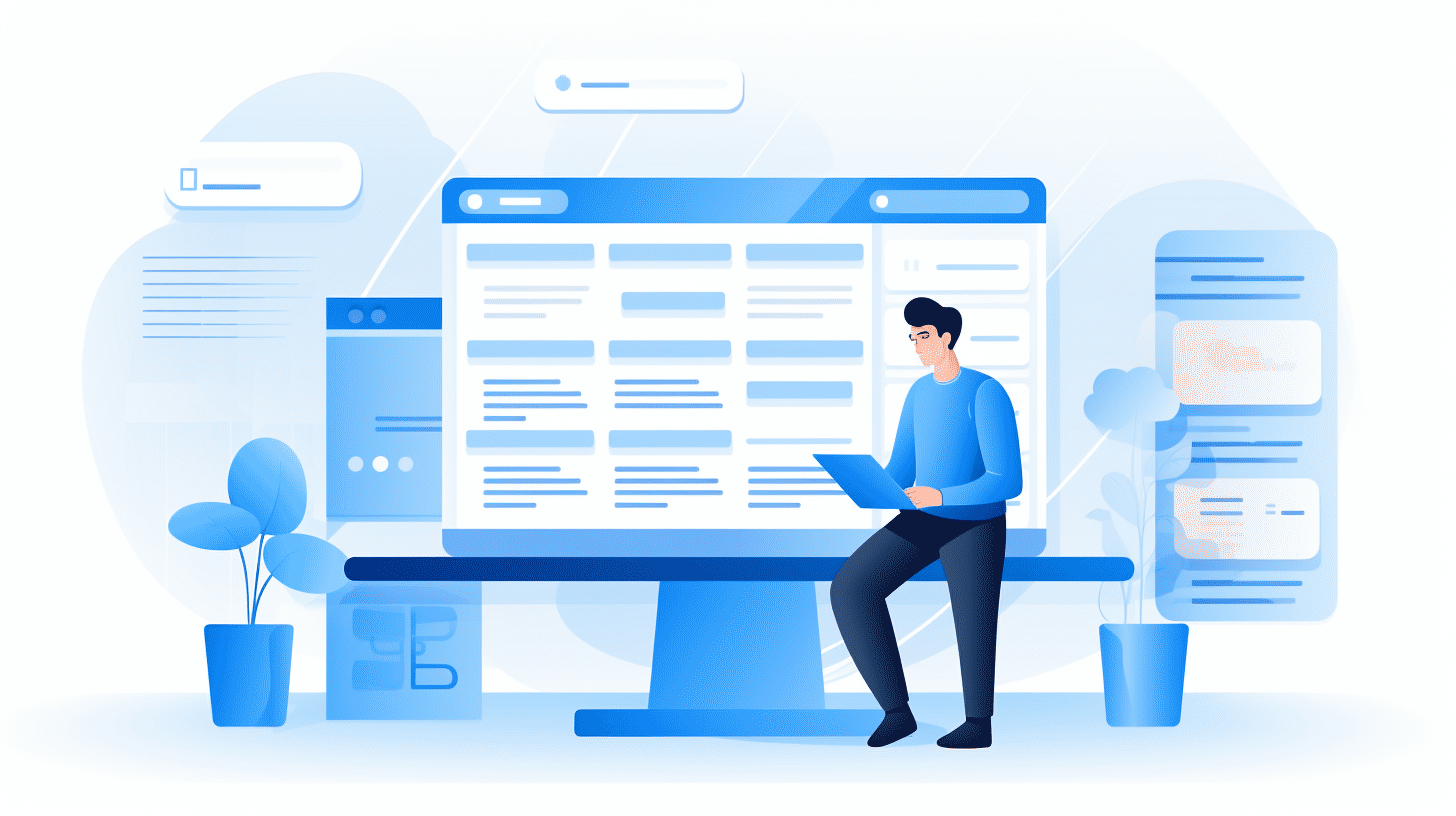在当今快节奏的数字环境中,速度就是一切。无论是加载网站、播放流媒体视频还是访问信息,人们都希望事情能立即发生。对于 WordPress 网站而言,加载时间过长可能会让访问者大失所望,并会严重影响用户体验和网站的整体性能。这就是为什么提高加载速度对于 WordPress 网站所有者和管理员来说至关重要。
在本文中,我们将探讨各种策略和技术,以将您的网站速度提升到一个新的水平。从优化图像和选择可靠的托管服务提供商到更新 WordPress 和实施高级优化技术,我们将涵盖所有内容。通过实施这些策略,您可以为用户提供无缝的浏览体验,同时提高网站在搜索引擎排名中的可见性。
因此,如果您准备好提高 WordPress 的加载速度并实现最佳性能,让我们深入研究并探索将您的网站转变为闪电般快速的强大网站的各种技术。
加载速度的重要性
🚀 您的网站加载速度是否比火箭飞过天空的速度更快?如果不是,您可能会错过一些重大好处。在当今快节奏的网络世界中,加载速度在决定网站的成功方面起着至关重要的作用。用户没有耐心等待加载缓慢的网站,研究表明,加载时间缓慢会对用户体验和转化率产生不利影响。
转化率
📊 你知道吗,加载时间仅为 1 秒的网站 高出 3 倍 与加载速度慢达 5 秒的网站相比,转化率更高?这一惊人发现来自 Portent 的一项研究,该研究强调了加载速度与转化率之间的直接相关性。用户更有可能访问加载速度快且高效的网站并进行购买。
💰 这对您的业务意味着什么?更快的加载速度可以直接转化为增加的收入和更高的投资回报。毫无疑问,投资优化网站的加载速度是提高在线业务成功率的明智之举。
缓存插件
💡 那么如何提高网站的加载速度?一种有效的解决方案是使用缓存插件。缓存是一种存储网站内容临时版本的技术,使用户可以轻松访问它,而无需每次都从服务器检索它。这可以显著减少加载时间,并带来更快、更无缝的用户体验。
⚡️ 使用缓存插件可以将加载时间缩短一半,从而立即提高网站的性能。通过缓存静态文件(例如 HTML、CSS 和 JavaScript),该插件可确保更高效、更便捷地向用户提供这些文件。因此,您的网站看起来更快捷、响应更快,吸引并留住访问者的注意力。
🔐 此外,缓存插件还可以优化数据库、压缩 CSS 和 JavaScript 以及实现其他性能增强技术。这种全面的方法可确保您的网站以最高效率运行,以最快、最有效的方式向用户提供内容。
因此,今天就迈出优化网站加载速度的一步吧。投资一个缓存插件,为您的用户提供闪电般的浏览体验,让他们保持参与度并推动转化。毕竟,在当今竞争激烈的在线环境中,每一秒都至关重要!
优化图像以提高速度
在当今快节奏的数字世界中,用户体验对于任何网站的成功都至关重要。优化网站以提高性能最容易被忽视的方面之一是图像优化。图像在网页设计中起着重要作用,但它们也可能是降低网站速度的主要因素。幸运的是,有两种技术可用于优化图像并提高网站速度: 图像压缩 和 延迟加载.
🖼️ 图像压缩
说到网站性能,大图像可能是一个真正的瓶颈。它们需要更长的时间来加载,导致页面加载时间增加,并可能带来令人沮丧的用户体验。图像压缩是在不显著影响图像质量的情况下减小图像文件大小的过程。通过压缩图像,您可以显著减小其文件大小,使它们加载速度更快,而不会牺牲视觉吸引力。
图像压缩如何工作?
图像压缩技术的工作原理是从图像文件中删除不必要的数据。这可以包括元数据、颜色信息或冗余像素。通过这样做,文件大小会减小,使图像更容易加载到网页上。图像压缩主要有两种类型:
- 无损压缩: 此技术可在不影响图像质量的情况下减小文件大小。无损压缩非常适合需要高细节水平的图像,例如产品图像或图形。 TinyPNG 和 JPEG迷你 是无损压缩的流行选项。
- 有损压缩: 有损压缩通过丢弃部分图像数据来减小文件大小。这会导致文件大小减小,但可能会导致图像质量略有下降。有损压缩通常用于较大的图像,例如横幅或英雄图像。常用的有损压缩工具包括 Kraken.io 和 Compressor.io.
➡️ 延迟加载
延迟加载是另一种可以通过优化图片加载方式来大幅提高网站速度的技术。传统上,当网页加载时,该页面上的所有图片也会加载。这可能会导致显著的延迟,尤其是对于包含大量图片的页面。另一方面,延迟加载会将图片的加载推迟到真正需要它们的时候。
延迟加载如何工作?
延迟加载的工作原理是,仅在图像即将进入用户视野时(即用户向下滚动页面时)才加载图像。这意味着屏幕上不会立即显示的图像将不会下载,直到需要它们时才会下载。因此,页面加载时间会减少,因为最初只会加载用户可见的图像。
可以使用 JavaScript 库实现延迟加载,例如 路口观察员 或者 延迟加载。这些库提供了一种将延迟加载功能合并到您的网站的简单方法,从而提高了网站速度和用户体验。
请记住,通过压缩图片和使用延迟加载技术来优化图片可以大大提高网站速度。通过减小文件大小和延迟图片加载,您可以为用户创造更快、更高效的浏览体验。
选择可靠的托管服务提供商
🚀 介绍
在建立网站时,选择可靠的托管服务提供商至关重要。托管服务提供商就像您在线形象的基础。它直接影响您网站的性能、加载速度和整体用户体验。那么,您如何选择满足您需求的正确托管服务提供商呢?不用担心,我们已经为您做好了准备!
🔍 需要考虑的因素
在众多托管服务提供商中,评估各种因素以确保做出明智的决定至关重要。请考虑以下因素:
- 正常运行时间和可靠性:寻找能够保证高正常运行时间(最好是 99.9% 或更高)的托管服务提供商,以确保您的网站始终可供访问者访问。没有人喜欢一个经常宕机或加载缓慢的网站!
- 加载速度:快速加载时间对于提供无缝用户体验至关重要。选择使用高性能服务器并提供缓存机制或内容交付网络 (CDN) 的托管服务提供商来提高加载速度。
- 可扩展性:随着时间的推移,您的网站可能会遇到流量和资源需求的增长。确保您的托管服务提供商提供可扩展性选项,让您可以轻松升级托管计划并轻松应对增加的流量。
- 客户支持:当您遇到技术问题或对托管服务有疑问时,响应迅速且乐于助人的客户支持团队可以发挥重要作用。寻找通过多种渠道(例如实时聊天、电子邮件和电话)提供全天候支持的提供商。
- 安全:保护您的网站和用户数据至关重要。选择实施强大安全措施的托管服务提供商,例如防火墙、SSL 证书、定期备份和主动恶意软件扫描。
💰 成本考虑
虽然优质托管服务需要付出代价,但必须在成本和价值之间找到平衡。请考虑以下与成本相关的方面:
- 计划和定价:了解托管服务提供商的计划和定价结构。比较不同的提供商,找到能够提供满足您网站需求的功能和资源的提供商,而无需为不必要的附加组件支付过多费用。
- 续约率:注意续费费率,因为有些提供商可能会提供介绍折扣,但续费后价格会大幅上涨。如果您致力于延长网站的使用寿命,请考虑长期计划。
- 退款保证:可靠的托管服务提供商应该提供满意度保证。检查他们是否提供退款保证,以便您无风险地测试他们的服务。
👥 客户评论和推荐
不要只听托管服务提供商的一面之词。从可信赖的来源寻找客户评论和推荐,以深入了解实际体验。考虑以下因素:
- 可靠性和正常运行时间
- 支持质量
- 加载速度
- 可扩展性和灵活性
☑️ 结论
选择可靠的托管服务提供商对于提高加载速度、确保高正常运行时间和提供出色的用户体验至关重要。在做出决定之前,请评估正常运行时间、加载速度、可扩展性、客户支持、安全性和成本等因素。不要忘记考虑客户评论和建议,以获得全面的了解。请记住,投资可靠的托管服务提供商是对您网站成功的投资!
更新 WordPress 以获得更好的性能

在当今的数字时代,拥有一个性能良好的网站对于企业和个人都至关重要。当今最流行的内容管理系统之一是 WordPress,它以易用性和灵活性而闻名。但是,与任何其他软件一样,WordPress 需要定期更新以确保最佳性能和安全性。插件和 PHP 更新对于保持您的 WordPress 网站顺利运行都起着至关重要的作用。让我们仔细看看为什么更新这些元素至关重要以及它如何使您的网站受益。
插件更新
插件是增强 WordPress 网站功能的附加组件。它们允许您自定义网站并添加新功能,而无需从头开始编写代码。定期更新插件至关重要,原因如下:
- 安全: 插件开发人员经常发布更新来修补漏洞并保护您的网站免受潜在威胁。未能更新插件可能会导致您的网站容易受到攻击,泄露敏感数据并损害您的在线声誉。
- 兼容性: WordPress 会随着时间的推移不断改进,推出新功能和改进。插件更新可确保您的网站与最新的 WordPress 版本保持兼容,从而避免任何冲突或功能问题。
- 表现: 过时的插件会降低网站速度,影响用户体验和搜索引擎排名。插件更新通常包括性能增强,确保您的网站保持快速响应。
- 错误修复: 开发人员发布更新来修复插件中已知的任何错误或问题。通过定期更新插件,您可以确保为访问者提供流畅、无错误的用户体验。
PHP 更新
在幕后,WordPress 依靠 PHP 编程语言来运行。PHP 更新为您的 WordPress 网站带来了多项好处:
- 安全: 就像插件一样,PHP 版本可能包含可被黑客利用的漏洞。更新到最新的 PHP 版本可保护您的网站免受潜在的安全漏洞的侵害。
- 表现: PHP 更新通常伴随着性能改进,使您的 WordPress 网站更快、更高效。这可以缩短页面加载时间,增强用户体验并鼓励访问者在您的网站上停留更长时间。
- 兼容性: 随着 WordPress 和插件的发展,它们可能需要更新的 PHP 版本才能正常工作。通过更新到最新的 PHP 版本,您可以确保您的网站与最新的软件版本兼容,并可以利用新功能和增强功能。
- 支持和维护: 不建议使用旧版 PHP,因为它们可能不再获得 PHP 社区的支持和维护。通过及时了解 PHP 更新,您可以享受持续的支持并访问新的 PHP 功能。
需要注意的是,在更新插件或 PHP 之前,建议备份您的 WordPress 网站,以避免任何潜在的数据丢失或网站停机。此外,在继续更新之前,请确保您的插件和主题与最新的 WordPress 和 PHP 版本兼容。
通过定期更新您的 WordPress 网站(包括插件和 PHP),您可以确保更好的性能、增强的安全性、与最新软件版本的兼容性以及更好的用户体验。忽略这些更新可能会导致潜在的安全风险、性能问题和软件冲突。保持主动性并让您的 WordPress 网站保持最新状态,以获得高性能网站的好处!
利用内容分发网络 (CDN)
想象一下:您花了无数的时间制作了一个漂亮的 WordPress 网站,其中包含有价值的内容、令人惊叹的视觉效果和用户友好的导航。您为自己的创作感到自豪,您应该感到自豪!但有一个问题——您的网站加载速度很慢,访问者很快就会失去耐心。您可以做些什么来解决这个难题并确保为您的受众提供无缝的用户体验?
进入内容分发网络 (CDN)。实施 CDN 可以帮助您在全球范围内加速 WordPress 网站,快速高效地向访问者提供内容。无论您是针对特定区域客户的本地业务还是面向全球受众的业务,CDN 都可以为您的网站性能创造奇迹。
那么,CDN 到底是什么?简单来说,CDN 是位于世界各地不同地理位置的服务器网络。这些服务器存储您网站内容的缓存副本,包括图片、视频、样式表和脚本。当访问者请求您的网站时,CDN 会从最靠近其位置的服务器提供内容,从而减少延迟并缩短加载时间。
以下是为您的 WordPress 网站使用 CDN 的一些主要好处:
- 提高网站速度:通过从距离访问者最近的服务器提供内容,CDN 可显著减少数据传输距离,从而缩短加载时间。这意味着无论访问者是从纽约还是东京访问您的网站,他们都不必等待很长时间才能看到您的内容。
- 全球影响力:借助 CDN,您的网站可以不受地理限制地覆盖全球用户。无论您的受众身在何处,他们都可以快速无缝地访问您的网站。
- 减少服务器负载:实施 CDN 后,服务器负载将分布在多个服务器位置。这意味着 CDN 可处理大部分流量,从而减轻原始服务器的压力,并降低高流量期间崩溃或速度变慢的风险。
- 改进 SEO:网站速度是搜索引擎排名的关键因素。更快的网站提供更好的用户体验,Google 等搜索引擎在确定排名时会考虑这一点。通过利用 CDN 加速您的 WordPress 网站,您可以提高在搜索结果中排名更高和吸引更多自然流量的机会。
简而言之,集成内容交付网络 (CDN) 可以为您的 WordPress 网站性能创造奇迹。从提高网站速度到增加全球影响力和增强 SEO,其好处是不可否认的。因此,如果您想提供无缝的用户体验并保持竞争优势,那么是时候考虑为您的网站实施 CDN 了。
减少膨胀以提高速度
在当今快节奏的数字世界中,速度就是一切。用户希望网站能够快速加载,如果加载速度慢,他们会毫不犹豫地点击后退按钮并转到下一个选项。导致网站速度变慢的主要原因之一是臃肿的内容——不必要的负担会拖累网站。但不要担心,您可以采取一些措施来减少这种臃肿并优化您的网站,以实现闪电般的性能。在本节中,我们将探讨一种有效的方法来实现这一点:消除未使用的插件、媒体和 JavaScript 文件。
删除未使用的插件
- 插件是增强网站功能的绝佳工具,但也可能造成网站过度膨胀。花点时间评估您安装的所有插件,问问自己每个插件是否真的有必要。有些插件可能是为特定目的而安装的,但由于其他插件的存在,这些插件不再相关或多余。删除任何不必要的插件以减轻网站负载。
清理未使用的介质
- 随着时间的推移,媒体文件很容易在您的网站上堆积如山。不再使用的图像、视频和音频文件会占用宝贵的空间并导致网站臃肿。使用媒体清理工具或手动浏览媒体库以识别和删除不再需要的文件。不要忘记检查重复文件并通过压缩剩余文件来优化它们,但不要牺牲太多质量。
最小化 JavaScript 文件
- JavaScript 是一种功能强大的编程语言,可在现代网站上实现各种交互功能。但是,过多或未使用的 JavaScript 文件会严重降低网站速度。花点时间检查您的 JavaScript 文件,确定哪些文件对于网站的功能至关重要。将多个 JavaScript 文件合并为一个文件并缩小文件大小有助于减少 HTTP 请求并缩短加载时间。
通过消除未使用的插件、媒体和 JavaScript 文件,您可以显著减少网站上的臃肿并提高其整体速度。请记住,速度是用户体验和搜索引擎优化的重要因素。因此,请花时间定期整理您的网站,享受更精简、更快速、更高效的在线体验。🚀
优化 HTML、CSS 和 JavaScript
在当今快节奏的数字世界中,网站性能至关重要。用户变得越来越没有耐心,加载缓慢的网站会导致高跳出率并失去潜在客户。提高网站性能的有效方法之一是优化 HTML、CSS 和 JavaScript 文件。
最小化🚀
优化这些文件的一种流行技术是 最小化压缩是指通过删除注释、空格和换行符等不必要的字符来减小文件大小的过程。通过这样做,文件会变得更小,加载速度更快,从而改善用户体验。
以下是有关缩小的一些要点:
- 减小文件大小: 压缩会删除多余的字符,从而显著减小文件大小。这对于网速较慢的用户或使用移动设备访问网站的用户尤其有益。
- 更快的加载时间: 当 Web 浏览器请求文件时,它必须从服务器下载。文件越小,下载时间就越短,从而缩短加载时间。这一点至关重要,因为研究表明,用户往往会放弃加载时间超过几秒钟的网站。
- 改进缓存: 压缩在浏览器缓存中也发挥着重要作用。当用户访问网站时,浏览器会将某些文件存储在缓存中,以便用户在后续访问时能够更快地完成操作。使用压缩文件,浏览器可以更有效地缓存这些文件,从而减少将来再次下载这些文件的需要。
根据您的具体需求,可以单独或集体对 HTML、CSS 和 JavaScript 文件进行压缩。有多种工具和插件可以在开发过程中自动压缩这些文件。
通过压缩优化 HTML、CSS 和 JavaScript 文件,网站所有者可以显著缩短加载时间并提升整体用户体验。在当今竞争激烈的数字环境中,每一秒都至关重要,优化这些文件是打造高效、高性能网站的重要一步。
您是否知道压缩可以减小文件大小并提高网站性能?了解有关优化 HTML、CSS 和 JavaScript 的更多信息 在这里,.
选择轻量级 WordPress 主题
⚡ 使用轻量级、快速的 WordPress 主题可以加快加载速度、改善用户体验并在搜索引擎结果中获得更好的排名。 ⚡
说到 WordPress 主题,人们很容易被精美的设计和炫目的功能所吸引。但是,请务必记住,您选择的主题对网站的性能和功能起着至关重要的作用。轻量级 WordPress 主题可以提供许多超越美观的好处,因此对于任何网站所有者来说都是明智的选择。
极品飞车
在当今快节奏的数字世界中,速度就是一切。用户希望网站能够快速加载,而像 Google 这样的搜索引擎在确定搜索排名时会考虑网站速度。轻量级的 WordPress 主题可以显著提高您网站的加载速度,确保访问者不必等待您的内容出现。
以下是轻量级 WordPress 主题可以提高加载速度的一些原因:
- 优化代码:轻量级主题采用最少且精简的代码构建,减少了您的网站呈现网页所需的工作量。
- 功能较少:虽然有些主题带有大量花哨的功能,但轻量级主题专注于基本功能。缺乏额外功能意味着需要处理和加载的代码更少,从而缩短加载时间。
- 高效设计:轻量级主题优先考虑效率和性能,从而产生更精简的 CSS 和 JavaScript 文件。这种优化的设计可让您的网站加载更快、更流畅。
通过选择轻量级主题,您可以让您的网站在加载速度方面领先一步,确保您的访问者能够以最短的等待时间访问您的内容。
增强用户体验👥
快速加载的网站不仅有利于您的搜索引擎排名,还可以改善整体用户体验。当用户访问网站时,他们希望快速轻松地找到他们想要的信息。轻量级的 WordPress 主题有助于提供流畅高效的浏览体验,让访问者保持参与度和满意度。
以下是轻量级主题增强用户体验的几种方法:
- 快速导航:加载速度更快,访问者可以无缝浏览您的网站。这意味着他们可以从一个页面移动到另一个页面、访问菜单并与您的网站元素进行交互,而不会出现延迟或中断。
- 响应式设计:许多轻量级主题优先考虑移动响应能力,确保您的网站在任何设备上都能正常显示和运行。随着越来越多的用户通过智能手机和平板电脑访问网站,这一点变得越来越重要。
- 直观的界面:轻量级主题通常采用简单直观的设计,方便用户找到所需内容。通过消除不必要的元素并注重可读性,轻量级主题可以增强用户参与度。
SEO 优势
搜索引擎优化 (SEO) 对于增加网站的自然流量至关重要。轻量级 WordPress 主题可以通过多种方式对您的 SEO 工作产生积极影响:
- 更快的网站索引:搜索引擎根据网站的加载速度来抓取和索引网站。轻量级主题可以帮助搜索引擎机器人快速访问和索引您的网页,从而提高搜索引擎的可见性。
- 降低跳出率:加载缓慢的网站通常会导致高跳出率,用户会很快离开您的网站。通过使用加载速度快的轻量级主题,您可以留住访客更长时间,并向搜索引擎发送有关内容相关性和质量的积极信号。
- 移动友好设计:随着移动搜索的重要性日益增加,搜索引擎在排名中优先考虑适合移动设备的网站。选择具有响应式设计的轻量级主题可确保您的网站针对移动设备进行优化,从而提高您在移动搜索结果中排名更高的机会。
总之,选择轻量级 WordPress 主题不仅仅是为了美观;这是一个战略决策,可以显著影响您网站的性能、用户体验和搜索引擎排名。通过优先考虑速度、效率和简单性,轻量级主题可以帮助您的网站在数字领域脱颖而出,并为您的访问者提供愉快的浏览体验。因此,花点时间研究并选择符合您网站目标和目的的轻量级 WordPress 主题。您的用户和搜索引擎会感谢您!
🌟 专业提示:如果您不确定在哪里可以找到轻量级 WordPress 主题,请查看官方 WordPress 主题目录或 ThemeForest 等信誉良好的主题市场。寻找具有积极用户评级、定期更新和良好支持选项的主题,以确保为您的网站获得可靠且高质量的主题。
启用 GZIP 压缩
在当今快节奏的数字世界中,网站加载速度在用户体验和搜索引擎优化中起着至关重要的作用。加载缓慢的网站不仅会让访问者感到沮丧,而且还可能失去潜在客户。提高网站加载速度的一个有效方法是启用 GZIP 压缩。
什么是 GZIP 压缩?
GZIP 压缩是一种在文件(例如 HTML、CSS 和 JavaScript)传输到用户浏览器之前减小其大小的方法。它通过删除冗余信息并压缩剩余数据来实现这一点。压缩文件到达用户浏览器后,就会被解压,从而缩短加载时间。
启用 GZIP 压缩的好处
启用 GZIP 压缩可以为您的网站带来多种好处:
- 更快的页面加载速度: 通过减小文件大小,GZIP 压缩可以加快网页的传输和渲染速度。这可以改善用户体验并提高参与度。
- 减少带宽使用: 文件越小,意味着需要从服务器传输到用户浏览器的数据就越少。这对于网络连接受限或速度较慢的用户尤其有利。
- 改进搜索引擎优化: 网站速度是搜索引擎优化的一个关键因素。Google 等搜索引擎在对网站进行排名时会考虑加载速度。通过启用 GZIP 压缩,您可以提高网站的加载速度,并有可能提高其搜索引擎排名。
如何启用 GZIP 压缩
在您的网站上启用 GZIP 压缩并不一定是一个复杂的过程。以下是基本步骤:
- 检查 GZIP 压缩是否已启用: 在进行任何更改之前,值得检查一下您的服务器上是否已启用 GZIP 压缩。您可以使用在线工具或检查网站的 HTTP 响应标头来查看 GZIP 压缩是否处于活动状态。
- 配置 GZIP 压缩: 如果尚未启用 GZIP 压缩,则需要在服务器上进行配置。这通常可以通过服务器的配置文件来完成。例如,如果您使用的是 Apache,则可以通过修改
.htaccess文件。 - 测试 GZIP 压缩: 启用 GZIP 压缩后,测试它是否正常工作至关重要。GTmetrix 或 Google PageSpeed Insights 等在线工具可以分析您网站的性能并提供有关 GZIP 压缩的反馈。
请记住,如果您对自己进行这些更改没有信心,最好咨询网站开发人员或托管服务提供商以寻求帮助。
专业提示: 除了启用 GZIP 压缩之外,您还可以通过缩小 HTML、CSS 和 JavaScript 文件来进一步优化网站的文件大小。缩小文件大小会删除不必要的字符(如空格和注释),而不会改变代码的功能。
通过将 GZIP 压缩技术融入网站基础架构,您可以显著缩短加载时间、提升用户体验,并可能提升搜索引擎排名。不要让加载缓慢的页面阻碍您的在线成功;立即利用 GZIP 压缩的强大功能。
清理数据库以提高性能
保持网站平稳运行对于提供积极的用户体验至关重要。一个经常被忽视但会对网站性能产生重大影响的领域是数据库。定期清理网站的数据库有助于提高性能和速度,确保您的网站能够快速高效地为访问者加载。
为什么要清理数据库?
随着时间的推移,您网站的数据库可能会被不必要的数据(例如未使用的插件或主题、垃圾评论、旧版本和其他临时文件)所淹没。这些数据的累积会降低您网站的速度并影响其整体性能。清理数据库可以删除这些多余的数据,让您的网站更高效地运行。
您能清洁什么?
清理数据库涉及识别和删除不再需要的不必要数据。清理数据库时可以重点关注以下几个方面:
- 未使用的插件和主题:删除不再使用的任何插件或主题。这些文件会占用数据库中宝贵的空间。
- 过期或垃圾评论:删除垃圾评论并删除任何不再相关或必要的评论。
- 帖子修订:如果您定期修订和更新帖子,您的数据库可能会存储每篇帖子的多个版本。清除旧修订可以释放数据库空间。
- 优化数据库表:随着时间的推移,数据库表会变得碎片化,从而降低查询速度。优化数据库表有助于通过更有效地重新排列和组织数据来提高性能。
如何清理数据库
清理数据库并不一定是一项艰巨的任务。您可以按照以下步骤操作,以使数据库保持最佳状态:
- 备份数据库: 在进行任何更改之前,必须备份数据库,以确保在出现任何问题时拥有数据的副本。
- 删除未使用的插件和主题: 浏览您的插件和主题列表并删除不再需要或使用的插件和主题。
- 删除垃圾邮件和不必要的评论: 使用插件或手动从您的网站删除任何垃圾或不相关的评论。
- 清理帖子修订: 考虑使用插件或运行数据库查询从数据库中删除旧的帖子修订。
- 优化数据库表: 使用插件或运行优化查询来整理和组织数据库表。
干净数据库的好处
维护干净且优化的数据库可以为您的网站带来多种好处:
- 性能改进: 删除不必要的数据并优化数据库可以显著提高网站的速度和整体性能。
- 更好的用户体验: 更快的加载速度可以带来更好的用户体验,降低跳出率并鼓励访问者停留并浏览您的网站。
- 增强的安全性: 清理数据库可减少潜在的漏洞并降低数据泄露的风险。
- 高效资源利用: 干净的数据库需要更少的资源来运行,从而减少服务器负载并优化资源使用。
定期清理网站数据库应该成为网站维护工作的一部分。通过保持数据库整洁,您可以确保网站为访问者提供无缝且快速的体验。因此,花点时间清理数据库,享受性能和用户满意度提高带来的好处。
优化图像文件并实现缓存机制
在网站性能方面,优化图像文件和实施缓存机制是至关重要的步骤。这些策略可以显著改善页面加载时间并增强整体用户体验。在本节中,我们将讨论使用响应式图像和优化文件格式的重要性,以及缓存机制的好处。
响应式图像
在当今的数字环境中,用户通过具有不同屏幕尺寸的各种设备访问网站,因此确保图像在所有平台上正确显示至关重要。响应式图像是解决此问题的方法。它们会根据设备的屏幕分辨率自动缩放和调整其大小,从而提供最佳的观看体验。
以下是优化图像响应性时需要考虑的一些关键事项:
- 文件大小: 大型图像文件会减慢页面加载时间。通过压缩图像来减小文件大小,而不会影响视觉质量。
- 文件格式: 为您的图片选择合适的文件格式。对于照片,请使用 JPEG 格式,而 PNG 格式适用于图形和插图。
- 图片尺寸: 提供不同尺寸和分辨率的图片版本。这样,浏览器就可以选择最适合用户设备的版本,而无需浪费带宽和处理能力来下载和调整大图像的大小。
请记住,使用适当的文件格式、尺寸和压缩技术可以大大提高网站图像的性能。
缓存机制
缓存机制涉及将文件或数据临时存储在用户的浏览器或中间服务器上。通过这样做,后续的页面访问可以检索这些存储的文件,从而减少每次从服务器获取文件的需要。这大大缩短了加载时间并减少了服务器负载。
以下是一些值得考虑实施的缓存机制:
- 浏览器缓存: 指示用户浏览器缓存静态文件(例如图片、CSS 和 JavaScript 文件)会对性能产生重大影响。通过设置适当的缓存策略,这些文件可以本地存储在用户设备上,从而加快后续访问的页面加载时间。
- 内容分发网络 (CDN): CDN 是地理上分布在不同地区的服务器网络。当用户请求文件时,CDN 会从距离用户最近的服务器传送文件。这可以减少延迟并提高性能。CDN 还具有内置缓存机制,可进一步优化内容传送。
- 服务器端缓存: 实施服务器端缓存技术(例如使用缓存插件或 HTTP 缓存标头)也可以提高网站性能。这些缓存机制存储生成的 HTML 文件或数据库查询结果,从而减少了为每个访问者重新生成内容的需要。
通过利用缓存机制,您可以减少服务器的负载,最大限度地减少网络请求,并通过更快地传递内容来增强用户体验。
你可知道? 根据 Google 的一项研究,如果网站加载时间超过 3 秒,53% 的移动用户会放弃该网站。优化图像文件和利用缓存机制可以显著减少加载时间并帮助留住网站上的用户。
总之,使用响应式设计技术、文件压缩和适当的文件格式优化图像文件,并结合实施缓存机制,可以对网站性能产生深远影响。这些策略不仅可以缩短页面加载时间,还可以帮助实现更流畅的整体用户体验。因此,不要忽视优化图像文件和实施缓存机制的重要性,以确保您的网站为访问者提供快速且引人入胜的体验。
监控和测量网站速度
说到网站性能,速度至关重要。加载缓慢的网站会让用户感到沮丧,并让企业失去机会。这就是为什么监控和测量网站速度对于任何网站所有者或开发者来说都至关重要。
通过仔细检查特定指标,您可以深入了解网站的加载速度,并确定潜在的改进领域。衡量网站速度的两个常用关键指标是首次内容绘制 (FCP) 和总阻止时间 (TBT)。
首次内容绘制 (FCP)
FCP 是指浏览器渲染网页上第一个内容所需的时间。它衡量用户在访问您的网站时能够在屏幕上看到有意义的内容的速度。简单来说,FCP 表示从用户角度感知到的加载速度。
拥有快速的 FCP 可以显著影响整体用户体验,因为它可以让访问者知道您的网站加载速度很快。这可以降低跳出率并提高用户参与度。监控网站的 FCP 可以帮助您识别性能问题并进行必要的优化以增强用户体验。
总阻塞时间 (TBT)
TBT 衡量网页实现交互所需的时间。它表示从首次内容绘制到浏览器响应用户输入之间的时间。此指标对于评估用户与网站交互的速度至关重要。
较高的 TBT 可能会导致用户体验不佳,因为访问者可能需要等待更长时间才能让网站响应他们的操作,例如点击按钮或填写表格。通过监控 TBT,您可以识别导致交互延迟的瓶颈,并采取措施优化网站的性能。
🔍 你可知道?
- Google 的核心网络生命力计划建议网站的 FCP 应低于 1.25 秒,TBT 应低于 300 毫秒,以获得最佳用户体验。
监控首次内容绘制和总阻塞时间指标可以深入了解您网站的加载速度,帮助您确定需要改进的地方并增强整体用户体验。通过优化这些指标,您可以确保您的网站快速加载并为访问者提供无缝的浏览体验。
在下一部分中,我们将探讨一些监控和测量网站速度的实用策略和工具。
高级优化技术
在当今的数字环境中,网站和在线平台在连接企业和客户方面发挥着不可或缺的作用,优化网站性能已变得至关重要。加载缓慢的页面会导致高跳出率和用户满意度下降。为了应对这些挑战,可以采用高级优化技术来提高网站速度和整体性能。可以产生重大影响的三种技术是 CDN 实施、Memcached 利用和 HTTPS 配置。
CDN 实施
一个 内容分发网络 (CDN) 是一个遍布全球的分布式服务器网络。通过在这些服务器上存储网站内容的缓存副本,CDN 可以从距离用户最近的服务器向用户提供内容。这种接近性可以最大限度地减少延迟并缩短页面加载时间。
实施 CDN 的好处包括:
- 更快的页面加载速度: CDN 的分布式特性确保用户可以从距离其位置最近的服务器访问内容,从而减少数据需要传输的距离并减少加载时间。
- 提高可用性: CDN 有助于将网站流量分配到多个服务器,从而减轻单个服务器的压力并提高网站可用性。
- 提高可扩展性: CDN 旨在处理大量流量,使其成为流量突然激增的网站的理想解决方案。
Memcached 利用率
Memcached 是一个高性能的分布式内存对象缓存系统。它使网站能够将经常访问的数据存储在内存中,从而减少重复数据库查询的需要。通过在内存中缓存数据,网站可以显著加快动态内容生成速度,并为用户提供更快的响应时间。
使用 Memcached 的好处包括:
- 减少数据库负载: 通过在内存中缓存经常访问的数据,网站可以减轻数据库的负载,提高整体性能和可扩展性。
- 更快的数据检索: 由于 Memcached 将数据存储在内存中而不是查询数据库中,因此检索缓存数据的速度要快得多,从而可以缩短网站访问者的响应时间。
- 改善用户体验: 更快的数据检索和减少的数据库负载可带来更流畅、响应更快的用户体验,从而提高用户满意度和参与度。
HTTPS 配置
在数据安全和隐私至关重要的时代,配置您的网站以使其能够 HTTPS (HTTP 安全)至关重要。HTTPS 利用 SSL(安全套接字层)或 TLS(传输层安全性)协议来加密网站和用户浏览器之间传输的数据,确保通信安全。
HTTPS 配置的好处包括:
- 数据加密: HTTPS 加密敏感用户数据,例如登录凭据或付款信息,使未经授权的一方无法读取,从而降低数据泄露的风险。
- 增强信任和可信度: 随着人们越来越重视网络安全,拥有安全的 HTTPS 连接可以让用户放心,他们的数据受到保护。这种信任可以对用户对您的网站和品牌的看法产生积极影响。
- SEO优势: 搜索引擎(例如 Google)将 HTTPS 视为排名信号。配置了 HTTPS 的网站往往在搜索结果中排名较高,从而提高知名度和自然流量。
通过实施 CDN、启用 Memcached 并将您的网站配置为通过 HTTPS 工作,您可以显著提高网站性能、改善用户体验并在当今竞争激烈的数字环境中保持领先地位。这些先进的优化技术对于任何希望最大限度地发挥其在线业务潜力的企业来说都是必不可少的。🚀
运行性能测试并分析结果
为了确保您的 WordPress 网站发挥最佳性能,定期运行性能测试并分析结果至关重要。这些测试将为您提供有关网站速度和整体性能的宝贵见解,让您能够确定需要改进的任何领域。通过进行这些测试,您可以优化网站以提供快速无缝的用户体验。那么,让我们深入了解运行性能测试和分析结果的过程。
性能测试的类型
您可以进行多种类型的性能测试来评估 WordPress 网站的速度和性能。以下是一些常用的测试:
- 负载测试: 此测试模拟大量用户流量,以评估您的网站在高负载下的表现。它可以帮助您识别潜在的瓶颈并确定您的网站是否可以处理大量并发用户。
- 页面加载测试: 此测试可测量您的网页加载时间。它提供有关您网站上各个页面性能的宝贵信息,让您可以识别需要优化的加载缓慢的页面。
- 压力测试: 此测试通过模拟大量流量来将您的网站推向极限。它可以帮助您了解您的网站在极端条件下的响应情况以及它是否能够保持稳定性和性能。
- 数据库性能测试: 此测试重点关注 WordPress 数据库的性能。它可以帮助您识别可能影响网站整体速度的任何慢查询或瓶颈。
分析结果
完成性能测试后,就该分析结果并进行必要的改进了。以下是有效分析数据的方法:
- 识别性能瓶颈: 查找可能导致网站速度变慢的任何性能瓶颈。这可能包括页面加载缓慢、服务器响应时间过长或数据库查询过多。
- 优化资源使用: 分析资源使用数据,确定可以优化服务器资源使用的任何领域。这可能涉及优化图像、减小文件大小或实施缓存机制。
- 优先修复: 根据已识别问题对网站性能的影响,对这些问题进行优先排序。首先重点解决最关键的问题,因为这些问题对整体速度和用户体验的影响最大。
- 测试和监控: 完成必要的改进后,再次运行性能测试,以确保您的优化已达到预期效果。持续监控网站的性能,以识别可能出现的任何新问题。
请记住,运行性能测试并分析结果应该是一个持续的过程。定期监控 WordPress 网站的速度和性能将帮助您在问题影响用户体验之前发现并解决这些问题。通过采取主动的优化方法,您可以确保您的网站保持快速、高效,并为访问者带来愉悦的体验。
常见问题
- 有哪些有效的方法可以提高WordPress网站的加载速度?
提高 WordPress 网站加载速度的一些有效方法包括优化图像、使用缓存插件、最小化 CSS 和 JavaScript 文件、启用压缩以及选择可靠的托管服务提供商。
- 我的 WordPress 网站需要缓存插件吗?
是的,强烈建议使用缓存插件来提高 WordPress 网站的加载速度。缓存插件会生成网页的静态 HTML 文件,从而减少服务器负载并帮助更快地向访问者提供内容。
- 如何优化图像有助于提高加载速度?
优化图片是指在不影响质量的情况下减小文件大小。可以通过将图片调整为合适的尺寸、使用 TinyPNG 或 Smush 等工具压缩图片以及使用延迟加载仅加载用户屏幕上显示的图片来实现。
- 选择可靠的托管服务提供商对网站加载速度有何影响?
选择具有良好服务器基础设施和快速响应时间的可靠托管服务提供商对于提高网站加载速度至关重要。快速的服务器可确保快速向访问者提供网站内容,从而带来更好的用户体验。
- 为了加快 WordPress 网站的速度,是否有必要最小化 CSS 和 JavaScript 文件?
通过删除不必要的代码、合并和压缩 CSS 和 JavaScript 文件来最小化它们,可以显著减小文件大小,从而缩短加载时间。这种优化技术有助于提高网站速度和性能。



















